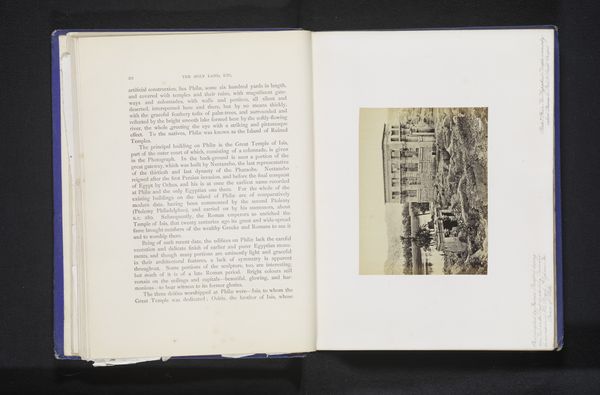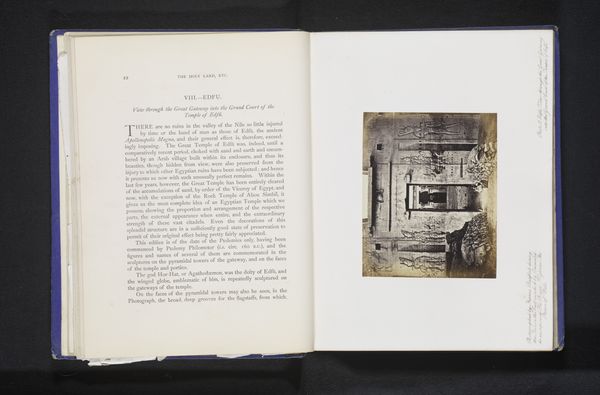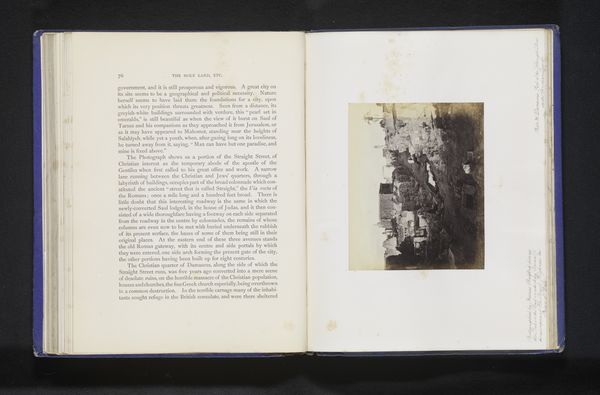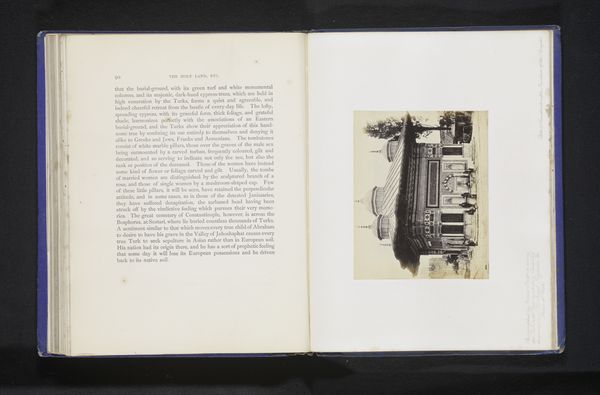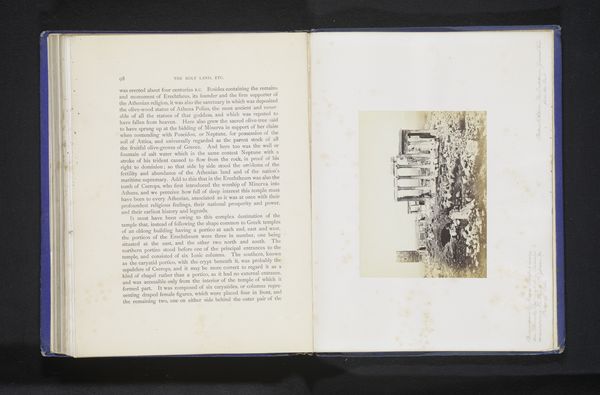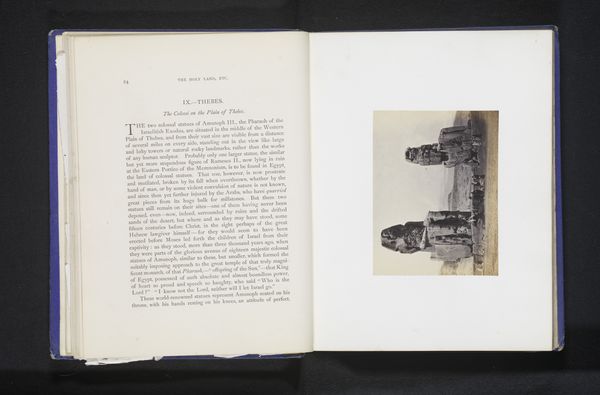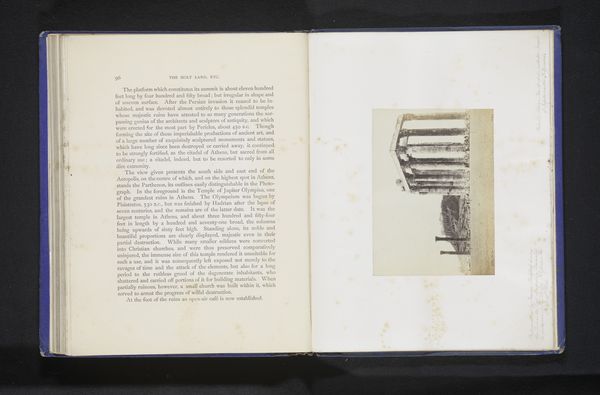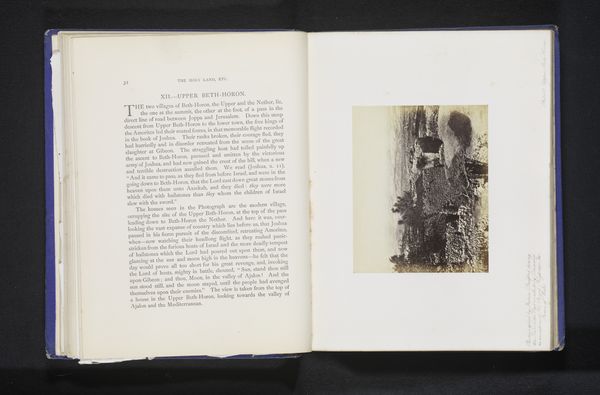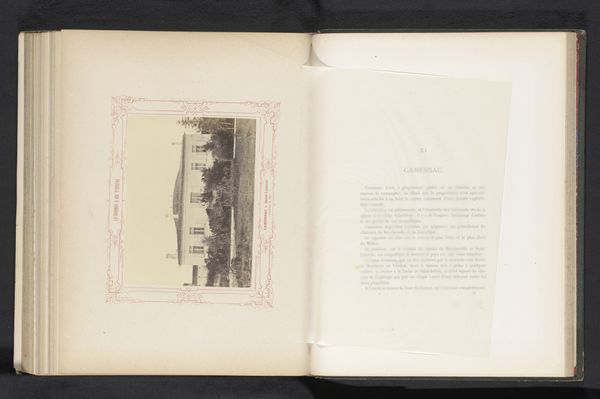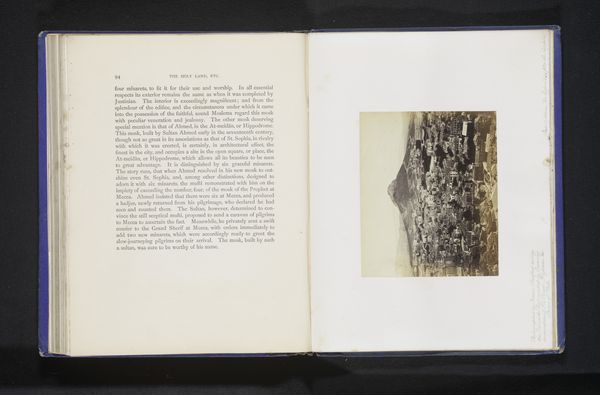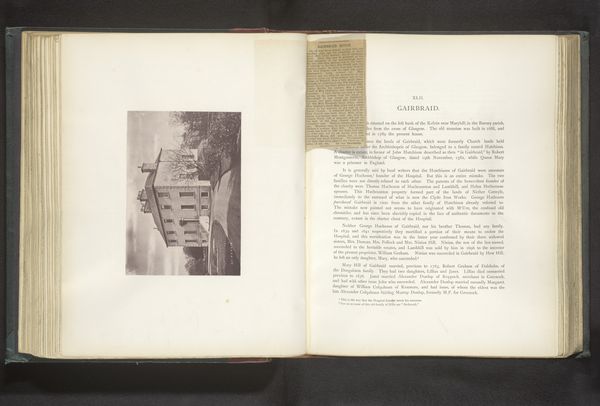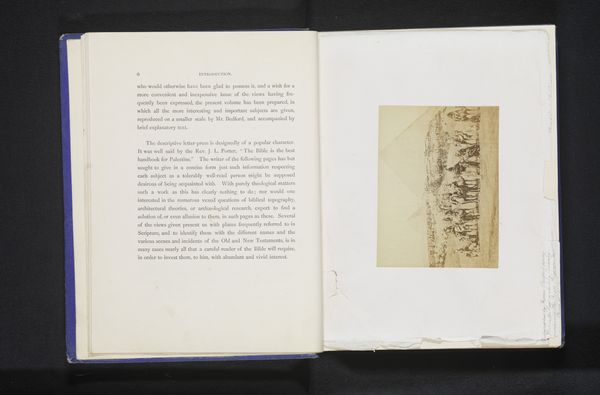
print, photography, albumen-print, architecture
# print
#
landscape
#
ancient-egyptian-art
#
photography
#
ancient-mediterranean
#
albumen-print
#
architecture
#
building
Dimensions: height 105 mm, width 127 mm
Copyright: Rijks Museum: Open Domain
Curator: Here we have Francis Bedford’s photograph, “Philae - Colonnade of the Great Court of the Temple of Isis,” taken before 1866. It captures a portion of the temple complex at Philae, Egypt. Editor: My first impression is of stark monumentality, but rendered in this almost ghostly sepia tone, there’s also a feeling of temporal distance and the impact of natural elements on it as raw material. Curator: Absolutely. The Temple of Isis was a central religious site in ancient Egypt and beyond, dedicated to the goddess Isis. Bedford's photograph allows us to glimpse how the site appeared in the mid-19th century before later archaeological work. Photography itself was a burgeoning tool for documentation and a way to assert colonial interest in the East. Editor: That’s it! Photography as a tool. When you really look, you can see the intricate carvings along the columns, even worn from centuries of weather. You feel the weight of the stone and labor, especially considering this print, an albumen print, involved a highly elaborate, labor-intensive chemical process too. There's labor upon labor here. Curator: Precisely, Bedford was a commercial photographer working during the Victorian era, when the aesthetic movement valued classical and Egyptian imagery. His photographs not only documented the architecture, but shaped the visual perception of it for Western audiences. They were as much about art as they were about evidence. Editor: How interesting is that idea of perception. Because Bedford, or his publisher, had to decide what exactly they chose to portray. And how. It looks like he got right in close, probably as close as he could to that massive structure. He invites a bodily relationship to the architecture of empire. Curator: Bedford's photograph contributed to the Victorian era’s understanding of the place and shaped Western art. This image circulated as both documentary evidence of ancient Egyptian civilization, a piece of visual propaganda of Victorian English society and artistic creation of its time. Editor: In essence, Bedford captured more than a structure; he preserved and communicated material evidence. A photograph—another layer of creation—reminding us of the labor and intention infused into every aspect of that civilization's endurance, as well as the civilization doing the recording!
Comments
No comments
Be the first to comment and join the conversation on the ultimate creative platform.
